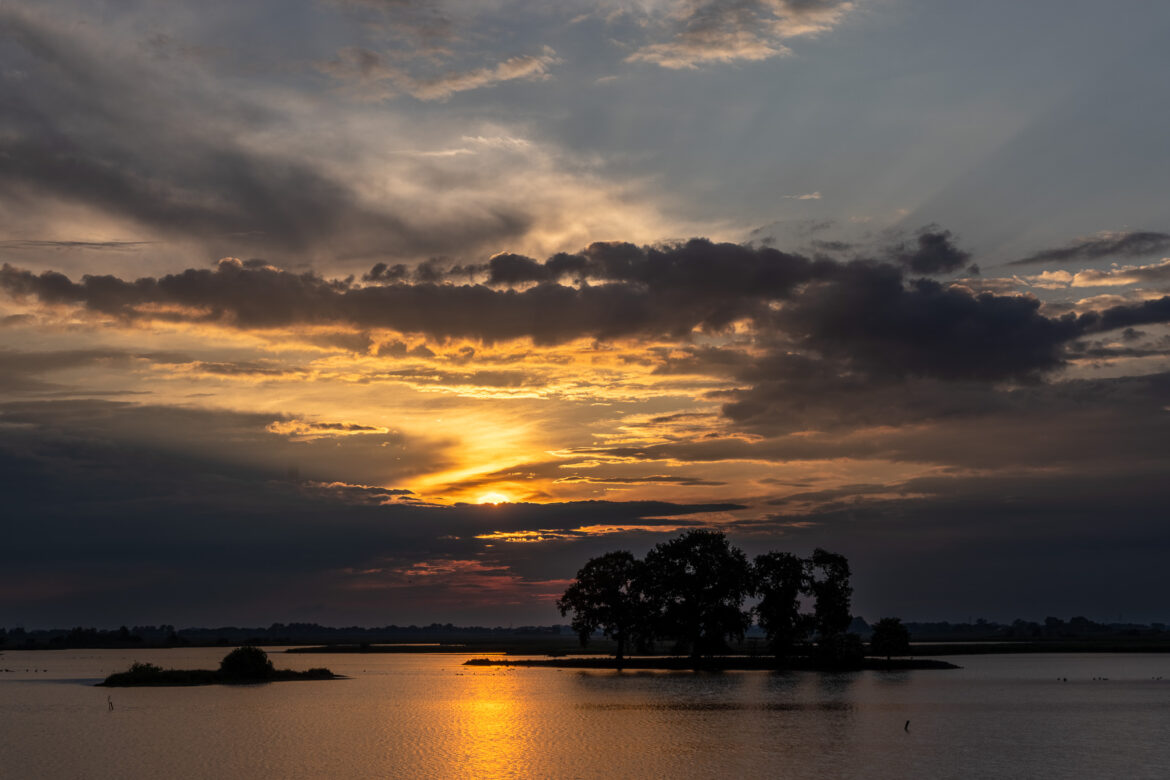In East Frisia, the term Hammrich stands for lowland used as meadow or pasture in the transition from the Geest to the Marsch. It is a typical East Frisian landscape that is criss-crossed by small bodies of water. The Holter Hammrich lies north of the small village of Holte on the banks of the River Leda.
The Leda-Jümme area is a shallow, wide side valley of the lower Ems. Due to its low location, it is threatened by strong headwater inflow, but above all by storm surges from the sea. Initially, dykes were built to avert the danger. However, as the boggy subsoil could not support sufficiently high dykes, the Ledasperrwerk was built in Leer in 1954. Storm surges were now prevented from reaching the lowlands and the dykes on the Leda and Jümme could be built with correspondingly smaller dimensions.
However, the closure of the last dyke gaps and the further expansion of the receiving waters and pumping stations draining into the area brought new problems: after heavy rainfall, flood loads led to higher water levels, threatening dyke breaches and flooding in unpredictable places. To prevent this, several storage areas were built or supplemented for the headwater that could no longer be accommodated in the river system — the so-called polders.
The Holter Hammrich is suitable for the joint objectives of flood prevention and nature conservation due to the natural site conditions, in particular the elevation of the terrain. The water level regulating structures allow for water level fluctuations as they occur in natural floodplains. Together with the extensification or abandonment of agricultural use, the rise in water levels in spring promotes, for example, the increased settlement of characteristic breeding birds, while amphibians benefit from the still waters.
Source: LKN Lower Saxony
As the polder is surrounded by dykes, it is ideal for birdwatching but also for photography, especially at sunset!

Leave a Reply